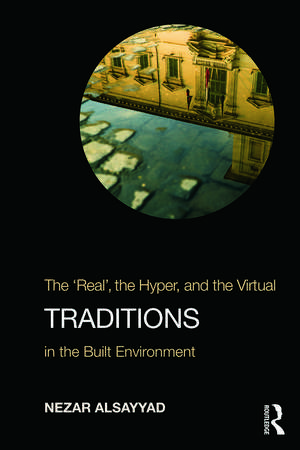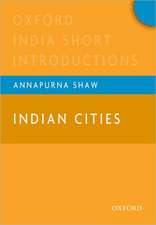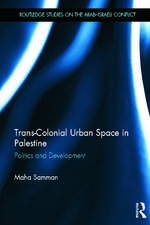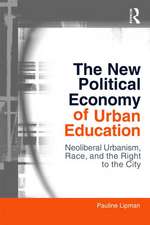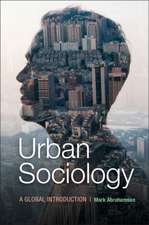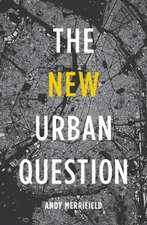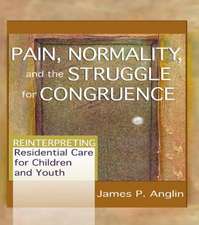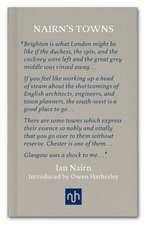Traditions: The “Real”, the Hyper, and the Virtual In the Built Environment
Autor Nezar Alsayyaden Limba Engleză Paperback – 17 mar 2014
| Toate formatele și edițiile | Preț | Express |
|---|---|---|
| Paperback (1) | 487.70 lei 6-8 săpt. | |
| Taylor & Francis – 17 mar 2014 | 487.70 lei 6-8 săpt. | |
| Hardback (1) | 1276.82 lei 6-8 săpt. | |
| Taylor & Francis – 19 mar 2014 | 1276.82 lei 6-8 săpt. |
Preț: 487.70 lei
Nou
Puncte Express: 732
Preț estimativ în valută:
93.33€ • 97.08$ • 77.05£
93.33€ • 97.08$ • 77.05£
Carte tipărită la comandă
Livrare economică 14-28 aprilie
Preluare comenzi: 021 569.72.76
Specificații
ISBN-13: 9780415777735
ISBN-10: 0415777739
Pagini: 248
Ilustrații: 55 black & white halftones
Dimensiuni: 156 x 234 x 13 mm
Greutate: 0.42 kg
Ediția:New.
Editura: Taylor & Francis
Colecția Routledge
Locul publicării:Oxford, United Kingdom
ISBN-10: 0415777739
Pagini: 248
Ilustrații: 55 black & white halftones
Dimensiuni: 156 x 234 x 13 mm
Greutate: 0.42 kg
Ediția:New.
Editura: Taylor & Francis
Colecția Routledge
Locul publicării:Oxford, United Kingdom
Public țintă
PostgraduateCuprins
Preamble: Studying Tradition in the Built Environment 1. The Form of Dwellings: A Lens on Tradition 2. Problematizing Tradition in the Built Environment 3. Conceptualizing Tradition and Modernity 4. Tradition and the Vernacular 5. Colonialism, Identity, and Tradition 6. Tradition, Nation-State, and the Built Environment 7. Tradition and Tourism 8. Simulation and Hyperreality: Spectacle in Traditional Built Environments 9. Tradition and Authenticity 10. Tradition and Virtuality
Notă biografică
Nezar AlSayyad, architect, urban historian, and public intellectual, is a Professor of Architecture and Planning and Chair of the Center for Middle Eastern Studies at the University of California, Berkeley. He is author and editor of many books including Dwellings, Settlements and Tradition (1989); Cities and Caliphs (1991); Forms and Dominance (1992); Consuming Tradition, Manufacturing Heritage (2001); Hybrid Urbanism (2001); The End of Tradition? (2004); Making Cairo Medieval (2005); Cinematic Urbanism (2006); The Fundamentalist City? (2010); and Cairo: Histories of a City (2011). In 1988, AlSayyad co-founded the International Association for the Study of Traditional Environments (IASTE) of which he is President, and served as Editor of its journal, Traditional Dwellings and Settlements Review (TDSR).
Recenzii
How to navigate the tangled discourses and practices that we name ‘tradition’? Given the variations across times and cultures, the differences among disciplines and professions, the contradictions among theories, and unprecedented changes due to globalization, there may seem little hope. But, at just the right time, Nezar AlSayyad’s book, Traditions: The ‘Real’, the Hyper, and the Virtual in the Built Environment, has appeared. The depth and subtlety that results from his decades-long study of traditional dwellings and settlements is matched by a freshness that also does justice to new phenomena such as hyper and virtual environments. We could not do better than letting him orient us, trusting him as a guide through this troubled but increasingly important territory. - Robert Mugerauer, Professor and Dean Emeritus , College of Built Environments, University of Washington
"AlSayyad combines a literature review with considered questions about the terminology used to define architectural traditions. He defines the ways that standard practices are influenced by internal and external forces, such as colonialism, environmental change, or economic factors, and traces the ways that tradition is redefined and cultural identity evolves. Complex and erudite, this book is best suited for upper-level readers. It is well indexed and quite viable as a reference source. An excellent addition to programs or libraries specializing in urban planning, anthropology, architecture, or history. Summing Up: Recommended. Upper-level undergraduates and above." – L. R. Hudgins, independent scholar, CHOICE Reviews, December 2014
"AlSayyad combines a literature review with considered questions about the terminology used to define architectural traditions. He defines the ways that standard practices are influenced by internal and external forces, such as colonialism, environmental change, or economic factors, and traces the ways that tradition is redefined and cultural identity evolves. Complex and erudite, this book is best suited for upper-level readers. It is well indexed and quite viable as a reference source. An excellent addition to programs or libraries specializing in urban planning, anthropology, architecture, or history. Summing Up: Recommended. Upper-level undergraduates and above." – L. R. Hudgins, independent scholar, CHOICE Reviews, December 2014
Descriere
This book is an investigation into the stubborn endurance of tradition in the modern world.
